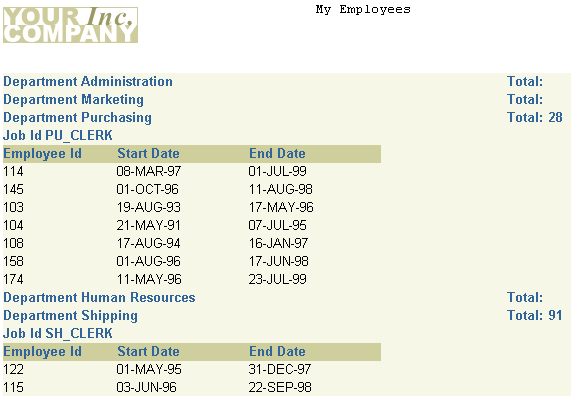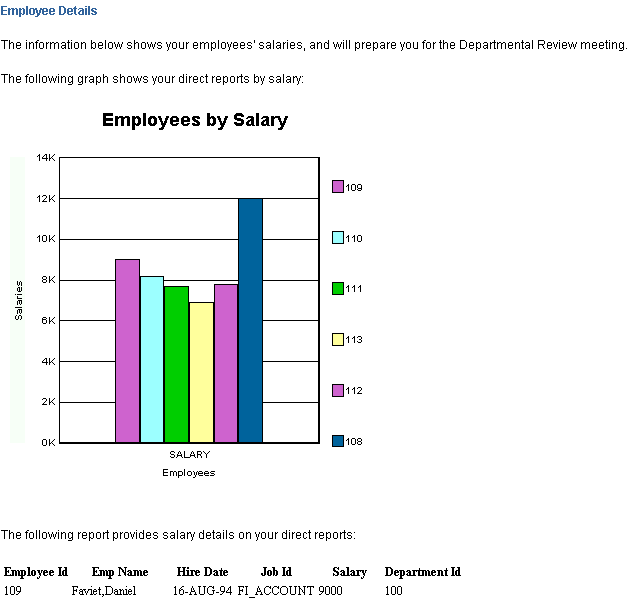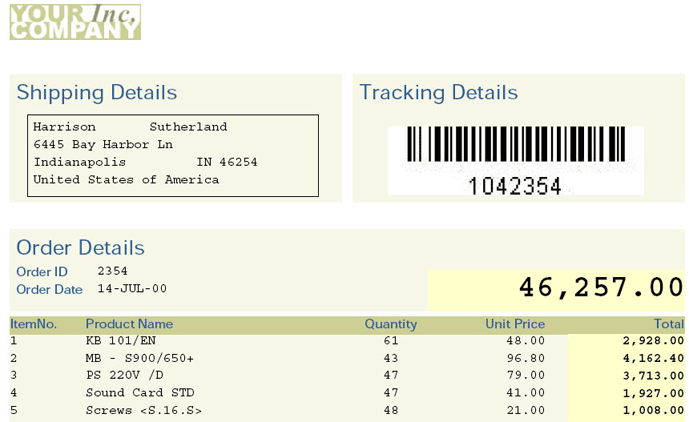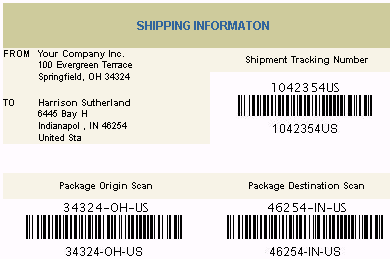3.6 Part 6: Building Reports with PL/SQL and Java
This part of the manual explains how you can build reports using PL/SQL and Java.
3.6.1 Building a PL/SQL report
In this example, you will learn how to use an external PL/SQL library and PL/SQL within a report to modify formatting and calculate the total compensation for each employee. In the sample output below, notice the spacing between records (for example, between the record for Alexander Khoo and the record for Alexis Bull). This space is not due to a break; it is the result of using a PL/SQL procedure in a format trigger.
Figure 3-37 Final output of the PL/SQL report example

Description of "Figure 3-37 Final output of the PL/SQL report example"
For more information on building this example, refer to Chapter 40, "Building a Report that Includes PL/SQL".
3.6.2 Building a paper report with REF CURSORs
In this example, you will learn how to use Reports Builder's features for using REF CURSORs. To build this paper report, you will use the Data Model view to create a multiquery data model, and then use the Report Wizard to create the report layout. You will make fairly extensive manual refinements in the Data Model view.
Figure 3-38 Final output for the REF CURSORs example

Description of "Figure 3-38 Final output for the REF CURSORs example"
For more information on building this example, refer to Chapter 41, "Building a Paper Report with REF CURSORs".
3.6.3 Building a simple Parameter Form for a JSP-based Web report
This example is designed to teach you how to build a simple JSP Parameter Form for a Web report. You will build a simple form in HTML, then create a JSP Parameter Form based on a data model in Reports Builder. You will then learn how to link the Parameter Form with an existing JSP-based Web report, then deploy and test both the JSP Parameter Form and the Web report through your browser.
Figure 3-40 JSP-based Web report based on a user parameter

Description of "Figure 3-40 JSP-based Web report based on a user parameter"
For more details on building this example, refer to Chapter 42, "Building a Simple Parameter Form for a JSP-based Web Report".
3.6.4 Building a report with a barcode
In this example, you will build a report using the barcode Java bean in Oracle Reports. You will build two reports: one for paper and one for the Web. The paper report shows an invoice for a single customer who has ordered multiple items from a company. The barcode indicates the tracking information for the order.
Figure 3-41 Final output of the barcode report with paper layout

Description of "Figure 3-41 Final output of the barcode report with paper layout"
Figure 3-42 Final output of the barcode report with Web layout

Description of "Figure 3-42 Final output of the barcode report with Web layout"
For more details on building this example, refer to Chapter 43, "Building a Report with a Barcode".
3.6.5 Building an accessible JSP-based Web report
In this example, you will use the properties in Oracle Reports to produce a JSP-based Web report that is accessible using assistive technology. You will learn how to modify an existing paper-based report to be accessible.
For more information on building this example, refer to Chapter 44, "Building an Accessible JSP-based Web Report".
Note:
No sample output is available for this report.
